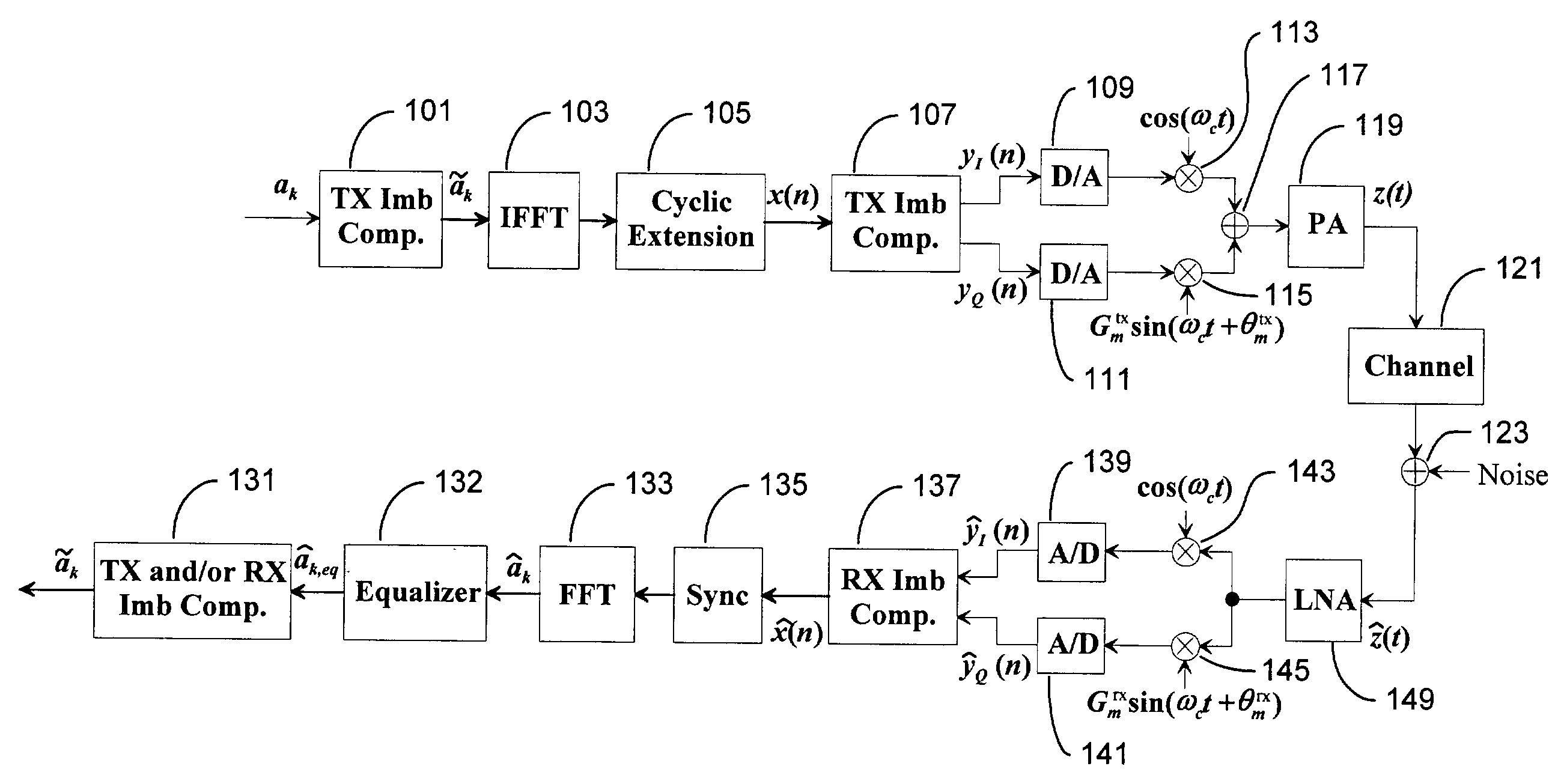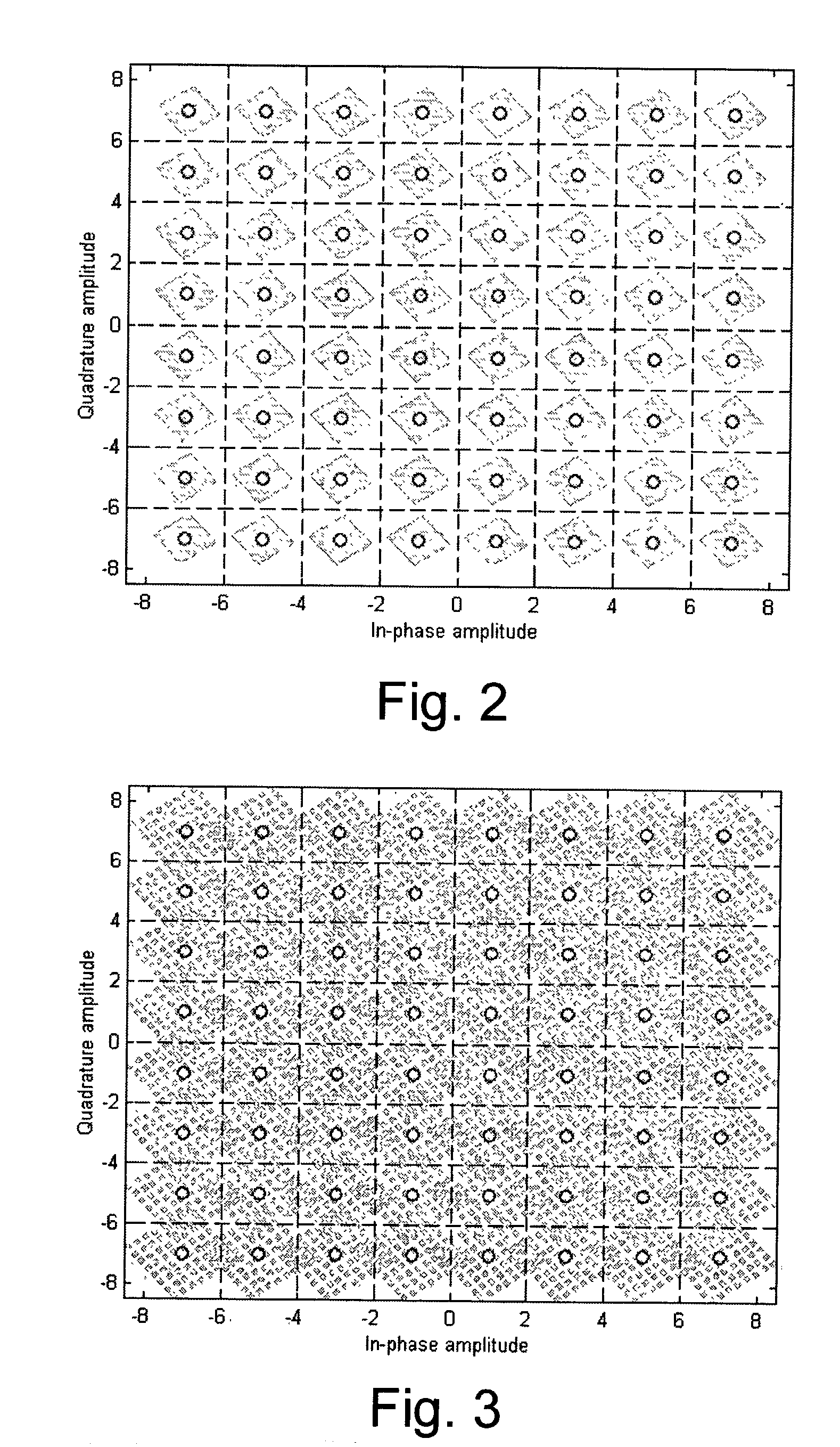Gain and phase imbalance compensation for OFDM systems
a gain and phase imbalance technology, applied in the field of gain and phase imbalance compensation for ofdm systems, can solve the problems of introducing gain imbalance, prone to radio impairment, and introducing gain imbalance at both transmit and receive radios
- Summary
- Abstract
- Description
- Claims
- Application Information
AI Technical Summary
Benefits of technology
Problems solved by technology
Method used
Image
Examples
Embodiment Construction
[0012]The following detailed description is made with reference to the figures. Preferred embodiments are described to illustrate the present invention, not to limit its scope, which is defined by the claims. Those of ordinary skill in the art will recognize a variety of equivalent variations on the description that follows.
[0013]This describes an OFDM symbol transmission and receiver model, particularly an 802.11a system model, and analyzes the effects of gain and phase imbalance. A method is proposed for measuring the imbalance at a receiver assuming OFDM modulation. Once the imbalance is measured, it is compensated for. Optionally, compensation can be performed at both the transmitter and receiver. Transmitter based compensation pre-compensates for imbalance introduced at the transmit mixer. Two receiver based compensation algorithms are defined: one corrects for imbalance introduced at the receiver and the other compensates for imbalance introduced at the far-end transmitter. Al...
PUM
 Login to View More
Login to View More Abstract
Description
Claims
Application Information
 Login to View More
Login to View More - R&D
- Intellectual Property
- Life Sciences
- Materials
- Tech Scout
- Unparalleled Data Quality
- Higher Quality Content
- 60% Fewer Hallucinations
Browse by: Latest US Patents, China's latest patents, Technical Efficacy Thesaurus, Application Domain, Technology Topic, Popular Technical Reports.
© 2025 PatSnap. All rights reserved.Legal|Privacy policy|Modern Slavery Act Transparency Statement|Sitemap|About US| Contact US: help@patsnap.com



